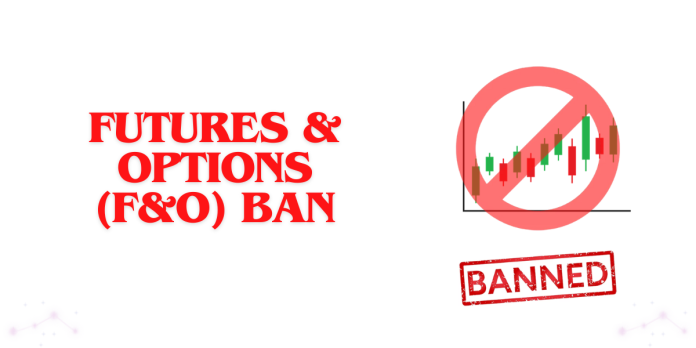Implications of F&O Ban on Stocks and Market Dynamics
You may have come across the term “F&O (Futures and Options) ban list” concerning certain stocks. But what exactly does this signify? Let’s simplify it. This article aims to delve into the meaning, functioning, criteria for inclusion, and the impact on stock prices when a stock enters this ban list.
What is the F&O ban and how does it work?
When people trade in Futures and Options, they are making deals in what we call the derivatives market. Sometimes, stock exchanges might feel that things are getting a bit risky or uncertain for traders. So, they banned trading Futures and Options for certain specific stocks.
But remember, this ban isn’t for all stocks; it’s just for particular ones. When a stock gets into this ban list, it means traders can’t make new deals or create a new position for that stock in the derivatives market until the ban gets lifted.
The idea behind this ban is to control too much trading that could be a bit risky or speculative for that stock. Traders are allowed to close their existing deals but can’t make new ones. If someone tries to make a new deal for a stock on the ban list, they’ll face a penalty, usually 1% of the increased position value.
How does a stock end up in an F&O ban?
Stock futures and options (F&O) contracts are placed under a ban when the open interest of a particular stock reaches 95% of the market-wide position limits (MWPL). The ban remains in place until the open interest drops below 80%. During this ban period, no new positions can be taken for any stock F&O contracts, although it is permissible to close existing positions. However, trading of the stock in the cash segment is not restricted by these limits.
In simple words, a stock gets into the F&O ban list when the number of open positions (which means the number of active contracts) becomes too high. There’s a limit set by the stock exchange, and if too many people are trading in that stock, exceeding this limit, it goes into the ban list.
Effect of F&O ban on stock prices
This ban is like a control button used by the stock exchange to prevent things from getting too risky or unstable. When a stock enters this list, it can affect its price. People who had deals in Futures and Options might have to close them suddenly, affecting the stock’s price in the regular market.
The ban aims to avoid big swings or unpredictable changes in a stock’s value. However because people are closing their deals, it can impact the stock’s value even in the regular market where people buy and sell actual shares.
Conclusion
So, the F&O ban isn’t a common thing, but it’s a step taken by the stock exchange to manage risks. It stops people from making new deals but allows them to close existing ones. This helps control the trading of certain stocks to prevent too much instability in the market.
Remember, it’s essential to keep an eye on how many deals are happening for stock to avoid surprises and understand why its price might suddenly change due to such bans. You might have wondered where to access this data. It’s readily available for download on the NSE’s website.


